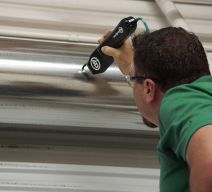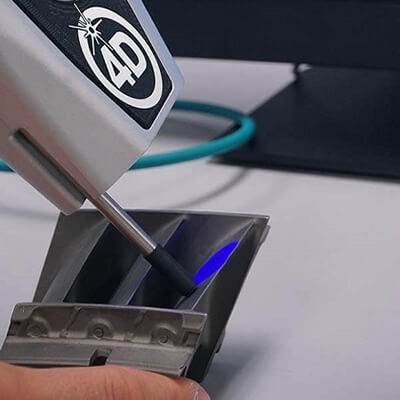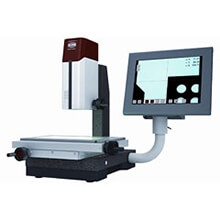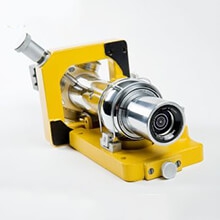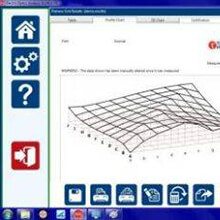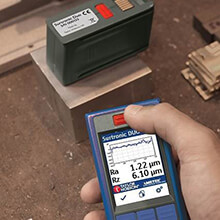- Contact 0870 350 7767
- |
- Advertise
Autocollimator used to test innovative Scanner System to monitor pollution
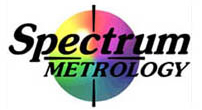 News and PR from Spectrum Metrology - Published 03 January 2019
A team from the University of Leicesterís department of Physics and Astronomy have been developing leading space technology to monitor air pollution around Leicester and Peterborough...
News and PR from Spectrum Metrology - Published 03 January 2019
A team from the University of Leicesterís department of Physics and Astronomy have been developing leading space technology to monitor air pollution around Leicester and Peterborough...The University of Leicester¬ís space scientists successfully carried out the tests earlier this year using an aircraft equipped with a pioneering CompAQS scanner to measure air pollution, in particular nitrogen dioxide, in the environment. The instrument is part of a major initiative to improve the UKs leadership in space instrumentation for Earth Observation and the University is hoping to send the CompAQS on a space mission in the early 2020s.
The CompAQS was designed, built and tested at the University of Leicester in collaboration with Surrey Satellite Technology Ltd and DL Optics Ltd. It monitors visible light and measures how much light is lost at specific wavelengths absorbed by nitrogen dioxide. Using this information, researchers can determine how polluted areas of the landscape are, including motorway junctions, airports, carparks and urban environments. This is valuable data to allow planners to mitigate the impact of pollution on health.
It was important to align the optics in the camera in order to gain optimum accuracy and give repeatable results. To align the optical components within the scanner a Taylor Hobson autocollimator was used.
An autocollimators main use is to measure the angle of a mirror or optical component. Using the laws of reflection, when the mirror is square to the autocollimator the reading is 0,0. In its simplest form the autocollimator can be used to align optical components by putting them all in line and square. Another feature of an autocollimator is that although it is focused at infinity for angle measurement you can add an objective lens (using a thread at the end of the barrel) and focus the autocollimator to align optical components.
This principle was used to align the optics in this specialised scanner ¬Ė using the autocollimator to first measure the offset in the centre of curvature between the lens and the grating, then to align the mirror.
Other announcements from Spectrum Metrology
-
Introducing 3D micro defect inspection at the MRO Europe Aviation Week
Spectrum Metrology is pleased to introduce a ground-breaking handheld gauging system to the MRO Europe exhibition for rapid micro-defect/corrosion analysis directly on the shopfloor.
16 Oct 2019
-
4D Inspec XL micro-defect measurement system wins 2019 Prism award
We are pleased to announce that the 4D InSpec XL surface defect gauge has won the 2019 Prism award in Test and Measurement.
16 Oct 2019
-
Digital Projectors and Video Measurement Microscopes in sharp focus at MACH
Although shadowgraphs have been available for many years they remain a popular choice for many parts with complex profiles...
03 Jan 2019
-
Alignment Telescopes used by Cammell Laird on the RRS Sir David Attenborough
Shipbuilders and marine engineers Cammell Laird recently won the £150m contract to build the Sir David Attenborough polar research vessel against fierce international competition.
03 Jan 2019
-
GTMA Manufacturing and Measurement 2016 show
13th October at the Concord Centre in Sheffield
28 Sep 2016
-
New Measurement Technology at MACH, 11-15 April 2016
Spectrum Metrology looks forward to meeting you at the MACH exhibition this April where we will have a range of innovative measurement solutions to show you (stand 4392)
03 Feb 2016
-
Saphir QD Ė Intelligent software for Rapid 2D geometry measurements
Automatically taking dimensional measurements as soon as the userís hand leaves the measurement area, the VideoCAD Rapid with intelligent Saphir software is ideal for all manufacturers...
03 Feb 2016
-
The NEW SURTRONIC DUO-9 Workshop Surface Finish Tester
The new Surtronic Duo-9 surface finish measurement instrument uses Bluetooth technology and touch screen software for fast measurement of surface roughness parameters in numerical & graphical format :
03 Feb 2016
-
Workshop Surface Finish Measurement range at Make Measurement Matter 2015
Spectrum Metrology will be pleased to meet you at the GTMA Make Measurement Matter road show which this year is being held at the Kettering Conference Centre on 15th October 2015...
14 Sep 2015




